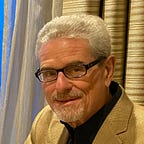12 Ideas That America Could Learn From Europe
My wife and I just completed a relaxing 3-week river cruise from Amsterdam to Budapest, visiting 12 cities, 4 countries and traversing 1,200 miles on the Rhine, Main and Danube rivers. We passed through 67 locks, many of which double in function as hydropower stations. Brilliant! We also added a post-trip to Prague for a few days.
My inspiration for writing was triggered by the many obvious differences between how Europe manages a plethora of subjects including healthcare, the environment and education versus America. My point isn’t to disparage my country (USA), rather I’m sharing my observations. Maybe some influential so and so will read my article and research it further.
Europe has it’s own share of problems. It’s struggling with familiar issues that plague America such as a shortage of low income housing, low employment and income inequality. But this article isn’t about similarities.
Let me begin to describe my observations about important differences I noted. Whenever possible, I will support my points with photos.
1. I’ll begin with one of my hot buttons — America’s hypocrisy and obsession about large vehicle size and low fuel prices. Europeans are paying around $7/gallon on a metric adjusted basis versus roughly $3.50/gallon that we’re paying in the US (June 2024). They drive fuel efficient vehicles, and the US does the opposite. I’ve written about this issue in this article.
2. We didn’t visit a single city or rural landscape that wasn’t litter-free. This combination of personal behavior and civic responsibility must be a hard-wired cultural phenomena. Americans have become blindly tolerant in this regard.
3. Whether it’s the law or an instilled behavior, trucks remain in the far left lane on any 2 or 3 lane superhighway, and they maintain a comfortable 60mph pace.
4. On those same divided highways, we observed consistent driver civility. I didn’t observe any dangerous NASCAR-like driving behavior that’s become so common in America in the last 30 years.
5. Public transportation in every city we visited was affordable, dependable, safe and clean. The equipment, for the most part, was newer and reinforced a positive community asset. The well-exercised options included trains, trams, buses, bikes and subways. Prague, which possesses one of Europe’s best urban public transportation models is operated by government subsidized private company. This article provides more detail. The photos below highlight bicycle usage.
According to our guide, systemwide access for all of those beforementioned transportation options can be purchased for roughly $25/month.
6. We noted widespread use of environmentally friendly greenery in all urban areas. This environmentally friendly design feature is also trending positively in the US, but Europe has adopted it more aggressively.
7. Obesity, in all age groups, was the exception. Unfortunately, our return flight to the US contrasted dramatically in the other direction. I published this article recently. We’re unquestionably doing harm to future generations by not addressing obesity.
8. Water management is a global hot-button issue. We noted the widespread use of a 2-button option when flushing toilets. It’s seemingly small solution, but it’s a positive step.
9. Based on mandated tests, public education in many European countries requires students to declare their decision to pursue either an academic or vocational path in their final 2 years of high school. This approach isn’t new, but America’s public educational system should do some serious soul searching regarding innovating opportunities like this one. Our institutions and teacher unions are failing our youth, especially in urban markets.
10. Europe is miles ahead of the US in trash management. The US, separates recyclable materials from regular trash. That’s it. It was a practical idea 40 years ago, but the recycling industry is unnecessarily burdened with having to sort your paper, plastic, cans and glass recyclables. Europe has accessible and easy-to-use recycling collection centers everywhere. They also utilize environmentally friendly trash-to-energy and traditional trash burning facilities.
11. We noted widespread use of plastic bottles which have been designed to not allow the cap to come off while in use. Keeping the cap and bottle together through the recycling process assures that they both are fully recycled. I was told this simple design feature is a year old.
12. We didn’t experience American super-sized restaurant portions except in a single German beerhall (and it was awesome!) See point #7.
Let me share something that made me be proud to be an American. You can’t tour this region without being immersed in the post-reality of WWII. Major cities like Munich, Nuremberg, Cologne, Vienna and Prague re-built their destroyed urban centers that included very old and impressive palaces and cathedrals.
The re-construction process followed the same pattern everywhere. All buildings had to be re-built to the exact specs of what was there in 1945. No exceptions. It’s impossible to imagine the level of destruction in these cities. Rail terminals and bridges were prime targets, which effectively halted the transport of heavy industrial goods required in re-building.
The American Marshal Plan was credited by natives in every city tour for which we participated as an indispensable re-building component. Initially American support provided millions of tons of food beginning immediately after the war ended. That was followed by infrastructure funding and supplies beginning in 1948 and ended in the early 1950’s. The Marshal Plan exemplifies the term American exceptionalism and hearing universal gratitude firsthand was very gratifying.
And finally, like millions of worldwide viewers, we observed the Northern Lights from our flight at 35,000 feet.
Thanks for reading my article. If you’d like to sign up to become a regular member, it cost you $5 per month and provides unlimited access to all the content on Medium. Here’s a link for you to sign up: https://medium.com/@ric62551/membership
